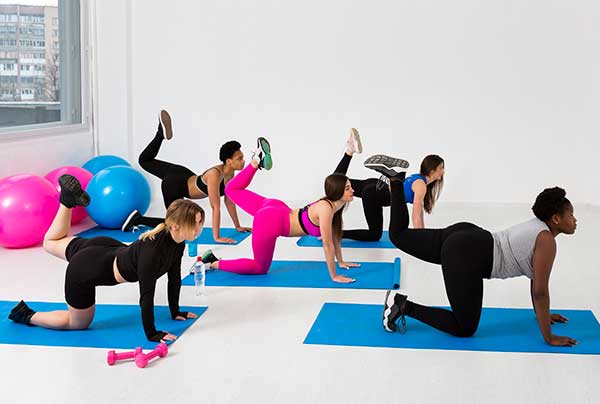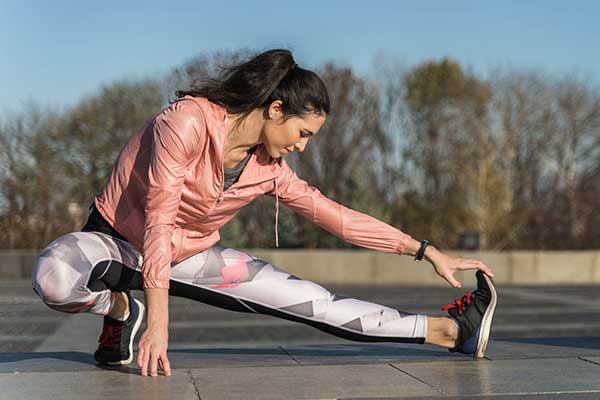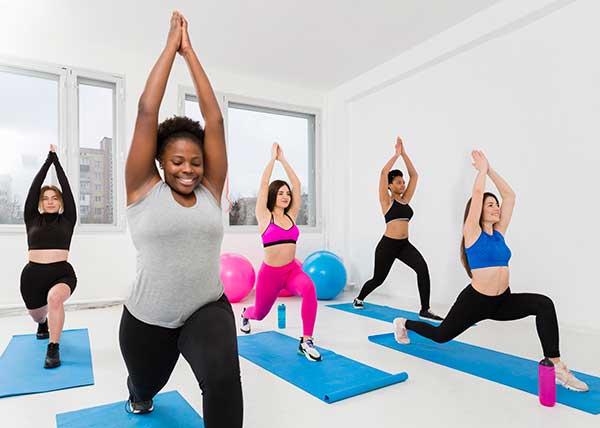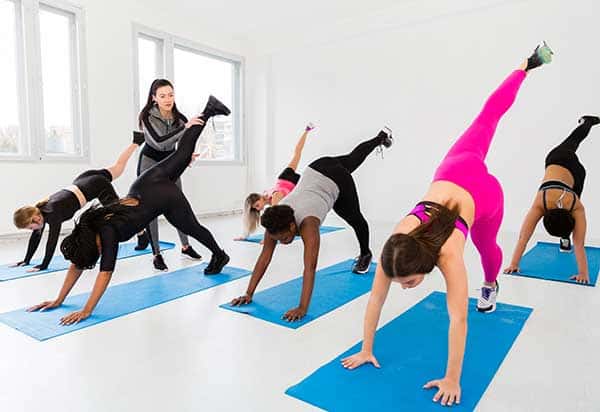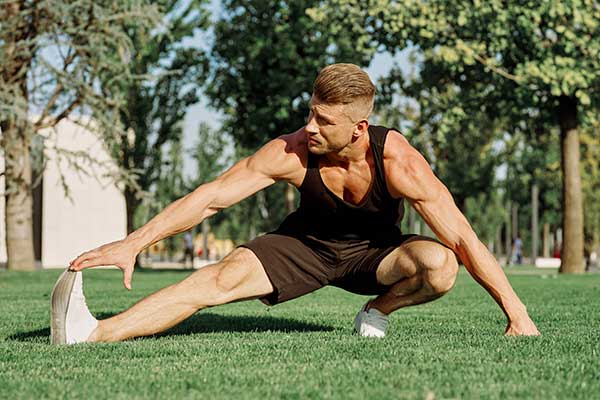Best Stretching Exercises to Stretch The Hamstring Muscles
Introduction to Hamstring Muscles and their Importance
The hamstring muscles play a crucial role in our daily movements, from walking and running to bending and stretching. Located at the back of your thighs, these muscles help support your body during various activities. When they’re tight or strained, it can lead to discomfort or even injury.
Stretching is key for keeping your hamstrings flexible and strong. It not only enhances athletic performance but also contributes to better posture and reduced risk of injuries. Whether you’re an athlete looking to improve your game or someone who simply wants more comfort in everyday life, understanding how to properly stretch those hamstrings is essential.
So let’s dive into the best stretching exercises specifically designed for these hardworking muscles!
Benefits of Stretching for Hamstrings
Stretching the hamstrings offers a multitude of benefits that enhance overall mobility. These muscles, located at the back of your thighs, play a crucial role in movement. By incorporating stretching into your routine, you can improve flexibility and reduce tightness.
Enhanced range of motion is another significant advantage. When hamstrings are flexible, everyday activities such as bending and lifting feel easier and more comfortable. This flexibility also translates to better performance in sports and physical activities.
In addition to physical benefits, regular stretching can alleviate discomfort caused by muscle stiffness. It may help prevent injuries during workouts or while engaging in daily tasks.
Moreover, consistent hamstring stretches promote blood circulation. Improved blood flow nourishes the muscles and aids recovery after exercise sessions. Prioritizing these stretches contributes not just to fitness but also to well-being in general.
Precautions to Take Before Stretching
Before diving into any stretching routine, it’s essential to prepare your body properly. Warming up is key. Spend five to ten minutes engaging in light aerobic activity like brisk walking or cycling. This helps increase blood flow and prepares your muscles for more intense stretches.
Listen to your body. If you’re experiencing pain or discomfort, it’s wise to pause and reassess how you’re approaching the stretch. Pushing through pain can lead to injury.
Stay hydrated as well; dehydration can impair muscle function and flexibility. Make sure you’re drinking enough water before starting your session.
Consider individual limitations such as past injuries or specific health conditions that might affect your ability to stretch effectively. Consulting with a healthcare professional can provide valuable guidance tailored specifically for you.
Top 5 Stretching Exercises for Hamstring Muscles
Stretching your hamstrings is essential for flexibility and injury prevention. Here are five effective exercises to incorporate into your routine.
The Standing Forward Bend is a classic move that helps elongate the entire back of the legs. Simply stand tall, hinge at the hips, and reach for your toes while keeping your knees slightly bent if necessary.
Next up, try the Seated Hamstring Stretch. Sit on the ground with one leg extended and bend forward from your hips towards that foot. This stretch targets tightness in both the hamstrings and lower back.
For a more supported approach, consider the Lying Hamstring Stretch. Lie on your back, pull one leg towards you with an exercise band or towel while keeping it straight.
The Single Leg Forward Bend offers balance challenges as well as stretching benefits—just lift one leg behind you while bending forward over the other knee.
Utilize a wall for support during the Wall Hamstring Stretch: place one foot against it while leaning into it gently to achieve deep relaxation in those muscles.
A. Standing Forward Bend
The Standing Forward Bend is a simple yet effective stretch for your hamstrings. It can be done anywhere, making it accessible for everyone.
To start, stand tall with your feet hip-width apart. Take a deep breath and as you exhale, hinge at the hips to fold forward. Allow your upper body to hang heavy toward the ground. This position encourages lengthening of the hamstring muscles.
For added intensity, try bending your knees slightly if needed. This will help relieve any tension in your lower back while still stretching those important muscles.
You can also grab opposite elbows while hanging down to deepen the stretch further. Hold this position for 20-30 seconds while breathing deeply and feeling each muscle unwind.
The beauty of this exercise is its versatility; you can adjust it based on how flexible you feel that day!
B. Seated Hamstring Stretch
The Seated Hamstring Stretch is a simple yet effective way to target those tight muscles. It’s easy to do, making it perfect for beginners and seasoned athletes alike.
To perform this stretch, sit on the ground with your legs extended straight in front of you. Keep your back straight as you hinge at the hips and reach toward your toes. Don’t rush—let yourself feel the gentle pull in the hamstrings.
You can also add variations by bending one knee while stretching the opposite leg or using a strap around your foot for added support. This modification deepens the stretch without straining yourself.
Hold this position for about 20-30 seconds, breathing deeply throughout. Remember not to bounce; instead, let gravity do its work as you relax into the stretch. This will enhance flexibility over time and reduce muscle tension effectively.
C. Lying Hamstring Stretch
The Lying Hamstring Stretch is a fantastic way to target tight hamstrings while promoting relaxation. Start by lying flat on your back, ideally on a yoga mat for comfort.
Bend one knee, placing your foot flat against the ground. Slowly lift the other leg towards the ceiling, keeping it straight. This motion stretches the hamstring effectively without straining.
You can use a strap or towel around your raised foot for added support. Pull gently until you feel a comfortable stretch in the muscle behind your thigh. Hold this position and breathe deeply.
Ensure that your lower back remains pressed into the mat; this protects against injury and enhances effectiveness. Alternate legs after holding for 20-30 seconds, allowing both sides to benefit equally from this simple yet effective stretch.
D. Single Leg Forward Bend
The Single Leg Forward Bend is a fantastic stretch for targeting the hamstrings and improving overall balance. To get started, stand tall with your feet hip-width apart.
Shift your weight onto one leg while lifting the other leg straight out in front of you. Keep that lifted leg flexed at the ankle. As you hinge forward from your hips, reach towards your toes on the standing leg.
Feel the stretch along the back of your thigh as you lower yourself down slowly. Maintain a flat back to avoid straining any muscles. Hold this position for 15 to 30 seconds before switching sides.
This exercise not only enhances flexibility but also engages your core and stabilizing muscles. It’s perfect for athletes or anyone looking to improve their mobility and posture during daily activities.
E. Wall Hamstring Stretch
The Wall Hamstring Stretch is a simple yet effective way to target those tight muscles at the back of your thighs. It’s perfect for anyone looking to improve flexibility and alleviate tension after a long day.
To perform this stretch, find a sturdy wall or surface. Stand about two feet away from it, facing forward. With one leg extended straight out in front of you, place your heel on the wall while keeping that leg straight.
Lean gently into the stretch by bending slightly at your hips and bringing your chest closer to the wall. Hold this position for 20-30 seconds, feeling the pull in your hamstring without straining.
Switch legs and repeat for balanced results. This exercise not only stretches but also promotes better posture by encouraging hip mobility. Integrate it into your routine regularly for lasting benefits!
How Often Should You Stretch Your Hamstrings?
Stretching your hamstrings regularly can enhance flexibility and prevent injuries. Ideally, aim to stretch these muscles three to four times a week. This frequency allows for gradual improvement without over-exertion.
If you’re particularly active or engage in sports, consider daily stretching. Your body will appreciate the extra care, especially after workouts when muscles are warm and pliable.
Listen to your body’s cues as well. If you feel tightness or discomfort in your hamstrings, it might be beneficial to incorporate stretches more frequently until that tension eases.
Consistency is key. Make stretching a part of your routine, whether it’s in the morning before starting your day or as part of a cool-down session post-exercise. Find what fits best with your schedule and stick with it for optimal results.
Tips
Stretching your hamstrings is essential for maintaining flexibility and preventing injury. Here are some practical tips to enhance your stretching routine.
Consistency is key. Aim to stretch your hamstrings at least three times a week for optimal results. Incorporating stretches into your daily routine can yield significant benefits over time.
Warm up before diving into these exercises. A light warm-up, such as brisk walking or jogging in place, increases blood flow to the muscles and prepares them for stretching.
Listen to your body. Stretch until you feel a gentle pull but never go so far that it causes pain. If an exercise feels uncomfortable, modify it or skip it altogether.
Hold each stretch for 15-30 seconds while breathing deeply throughout the process. This allows the muscles to relax and promotes effective elongation.
Consider incorporating dynamic stretches before workouts and static stretches afterward. Dynamic movements activate the muscles, while static holds help with recovery post-exercise.
Stay hydrated! Proper hydration supports muscle function and aids in recovery after stretching sessions.
Be patient with yourself. Flexibility takes time to develop, so celebrate small improvements along the way!
By integrating these tips into your routine, you’ll enhance both flexibility and mobility in your hamstring muscles effectively.
- About the Author
- Latest Posts
Johnnie D. Jackow Sr., the founder and CEO of Total Body Fitness, Worldwide, has a long-standing career in the fitness industry. He began as a certified personal trainer in the mid-90s and soon after authored his first weight loss book in 1998. This led to the launch of Total Body Fitness, Nationwide in the USA at the same time. Johnnie gained recognition as the fitness guru of his time, running infomercials on local TV late at night in Houston, Texas. Over the years, he has helped more than 40,000 individuals from all over the world achieve their health and fitness goals. With over 60,000 hours of documented training in integrative functional medicine, he completed his PhD in human physiology in 2010. His primary objective is to assist people in reaching their health and fitness goals through alternative approaches rather than relying solely on conventional medicine and pharmaceutical drugs. Today, with almost three decades of experience under his belt, Johnnie continues to be a leader in health and fitness.

